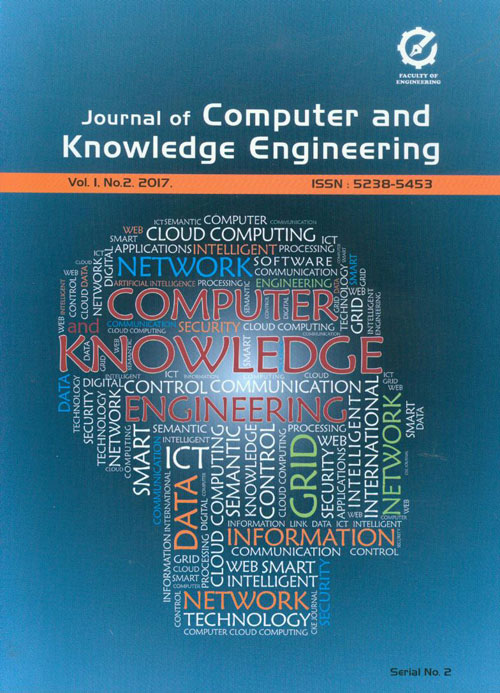فهرست مطالب

Journal of Computer and Knowledge Engineering
Volume:4 Issue: 2, Summer-Autumn 2021
- تاریخ انتشار: 1401/05/31
- تعداد عناوین: 3
-
-
Pages 1-10
Due to the increasing deployment of vehicles in human societies and the necessity for smart traffic control, anomaly detection is among the various tasks widely employed in traffic monitoring. As the issue of urban traffic and their relative smart monitoring systems have gained popularity among researchers in recent years, there exist several studies in this regard. In most of these studies, classification is performed based on the behavior of drivers, where a set of default trajectories are used in order to learn the system and classify the related data. However, two under-studied challenges are the lack of access to sufficient data to provide an efficient model, along with the lack of access to anomaly data that covers all possible abnormal trajectories. While the former challenge can be tackled through long-term data recording, the latter requires appropriate considerations. To this aim, we have utilized a combination of optimized convolutional neural network and fuzzy neural network classifiers, along with autoencoding neural networks. The final combination occurs at the decision level. First, the CNN-ANFIS classifier assigns the input trajectory to one of the predefined categories. Then, the trained autoencoder networks examine the result in order to find whether the trajectory is normal or abnormal. Obtaining 87.5% accuracy on QMUL and 99.5% on the T15 datasets confirms the superior performance of the proposed method.
Keywords: Neural-Fuzzy Inference System, Autoencoder Neural Network, Deep Neural Network, Trajectory Anomaly Detection -
Pages 11-16This study investigates the application of the Black Hole algorithm (BH) for solving 0–1 knapsack problems. Knapsack problem is a classic and famous problem for testing and analyzing the behavior of optimization and meta-heuristic algorithms. There is no single algorithm which is suitable for all types of the knapsack problem. So it is an open research area to solve knapsack problem using novel optimization algorithms efficiently. BH algorithm is one of the most recent nature-inspired algorithms that is inspired by the black hole phenomenon. Like other population-based algorithms, the black hole algorithm starts with an initial population of candidate solutions to an optimization problem and an objective function that is calculated for them. At each iteration of the Black hole algorithm, the best candidate is selected to be the black hole, and others called stars. If a star gets too close to the black hole, it will be swallowed by the black hole and is gone forever. Computational experiments with a set of large-scale instances show that the BH algorithm can be an efficient alternative for solving 0–1 knapsack problems. The results show that the algorithm can find high quality solutions in less time compared to similar meta-heuristic approaches. Based on the obtained results it is clear that BH algorithm is a stable algorithm as the standard deviation of finding solutions in different runs is smaller than other test algorithms.Keywords: Knapsack problems, Black hole algorithm, Optimization
-
Pages 17-22
Nowadays, prediction and decision making are two inseparable principles in the management and two distinct roles of managers. The organizations spend a large part of their budgets on predictions from past data. They will lose their money if they are neglected. On the other hand, decision-making is the most critical step in problem-solving. Moreover, it is considered the main task of a manager as a problem solver. Making decision becomes more complicated when we are faced with multi-criteria decision-making issues. Combining prediction and decision-making approaches helps researchers to make a better choice utilizing prior knowledge. One of the most essential and comprehensive systems designed for multi-criteria decision-making is Analytical Hierarchy Process (AHP) process. Deep learning as a valuable extension of artificial neural networks has been the focus of many researchers. In this paper, AHP is used to classify, compare, and determine the weights of a deep learning approach. In order to evaluate the efficiency of the proposed method, the prediction of vehicle price application is chosen, and the results are compared with neural networks. The data set is related to the sale of Hyundai and Kia Motors cars in the United States and Canada. It is emphasized that the data are used only to evaluate the proposed method and can be generalized to solve all similar issues. The sales forecasting data of two car companies showed that the proposed method is superior to other regression methods. To extend the proposed methos as our future work, the aim will be to develop a comprehensive decision-making and forecasting system by combining these two approaches.
Keywords: Analytical Hierarchy Process, deep Learning, Decision making, Regression


